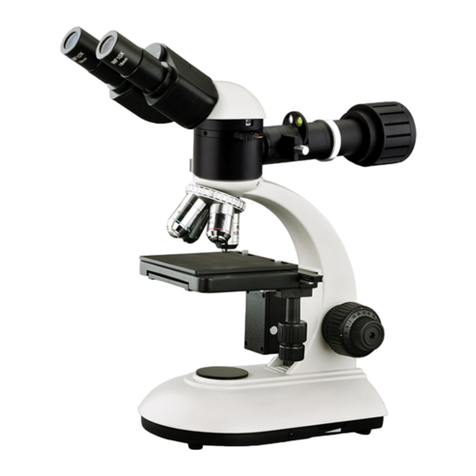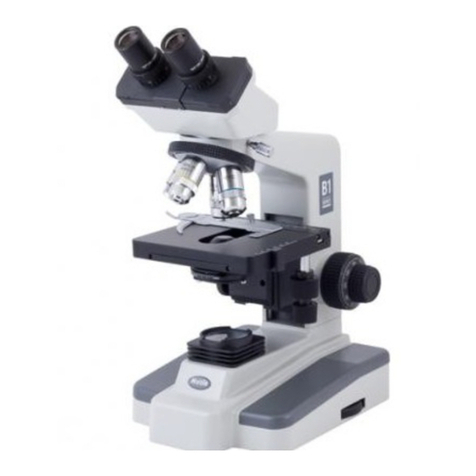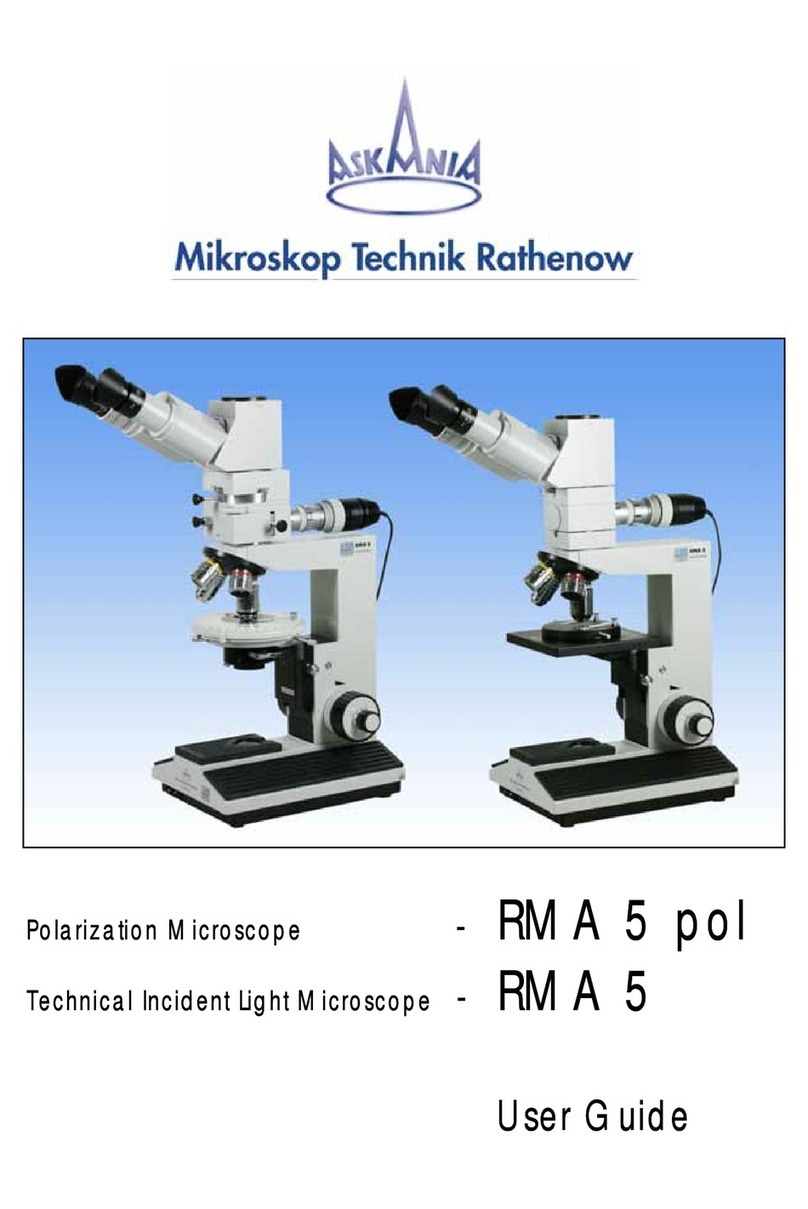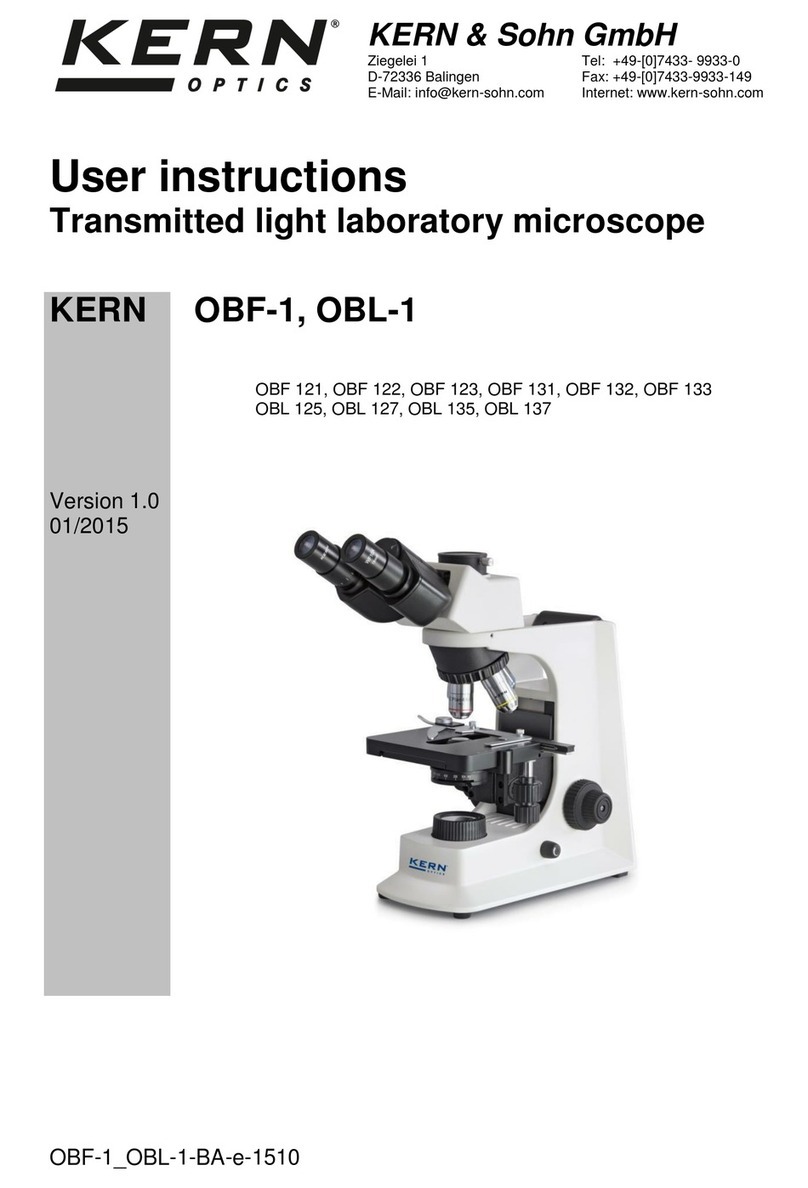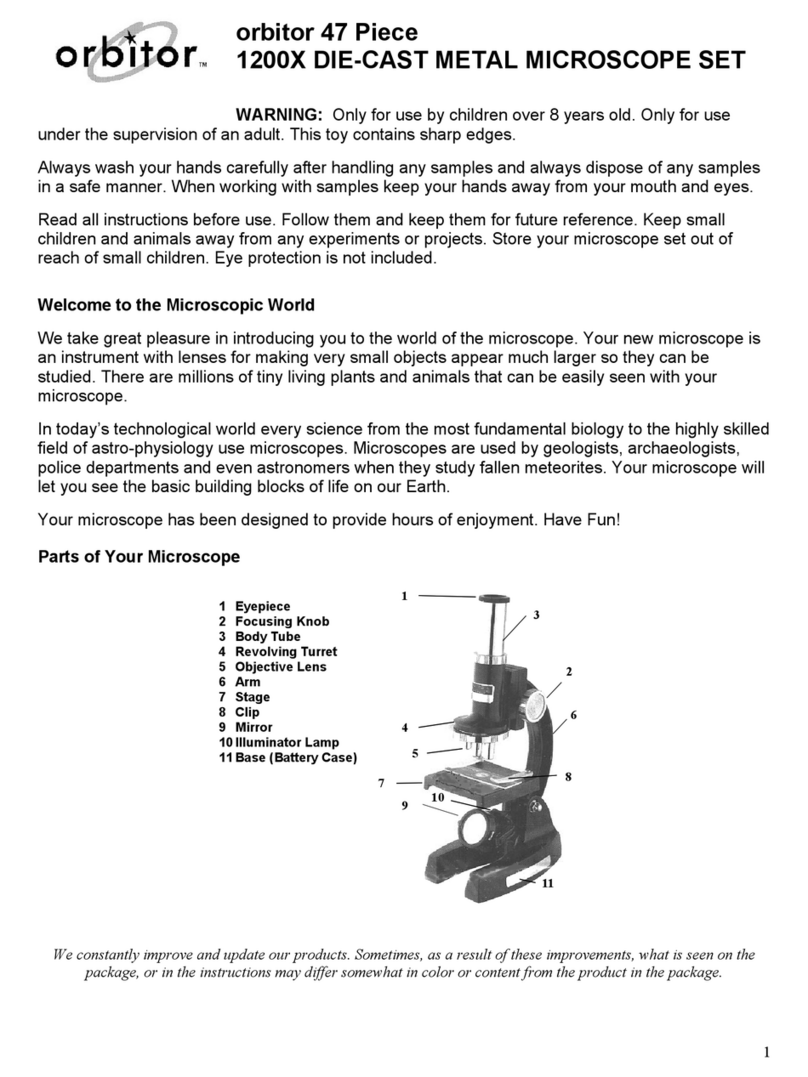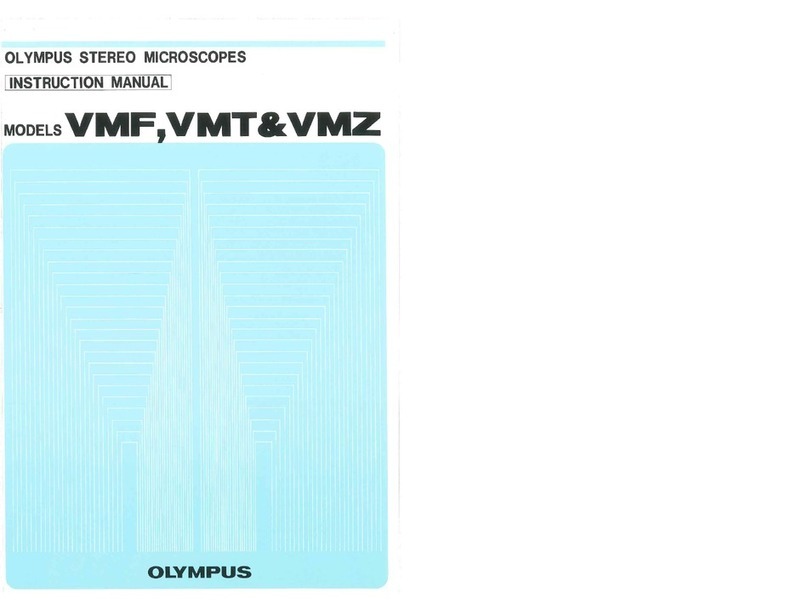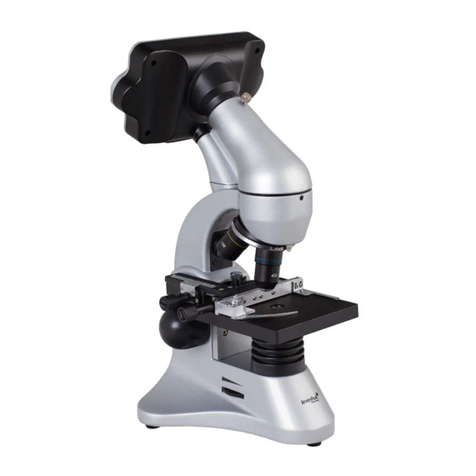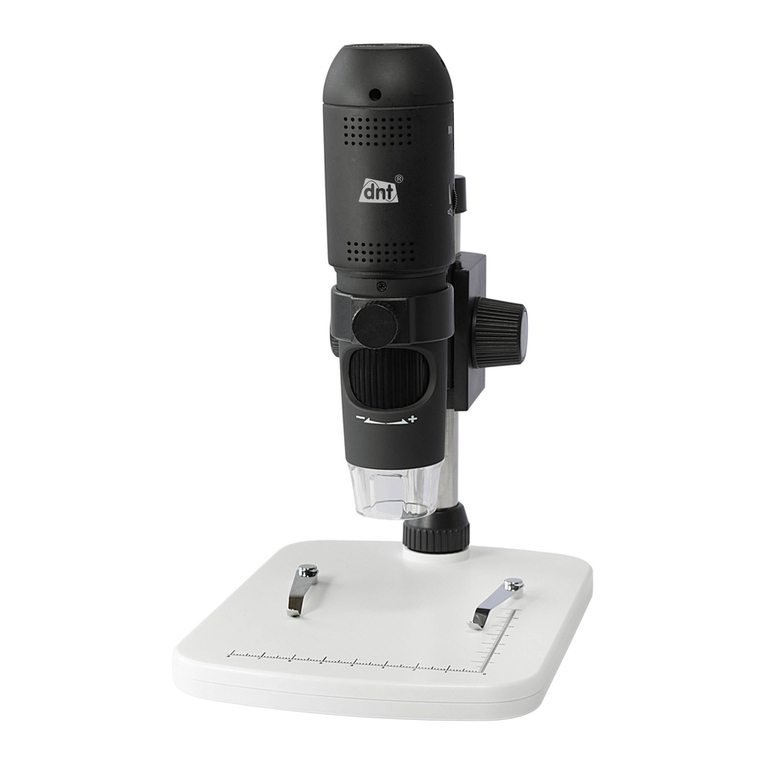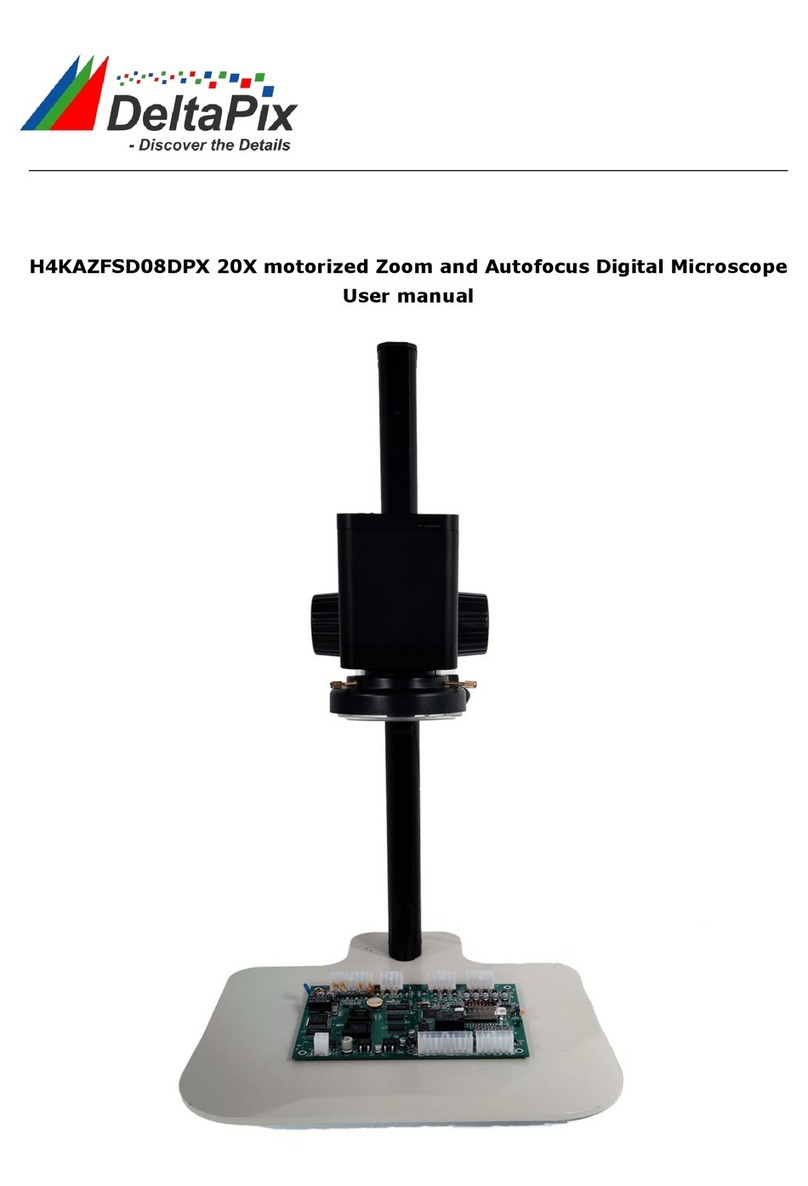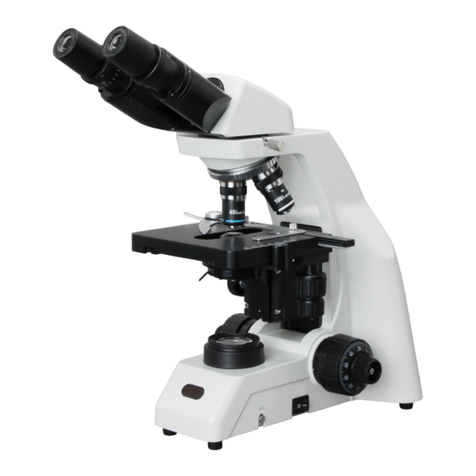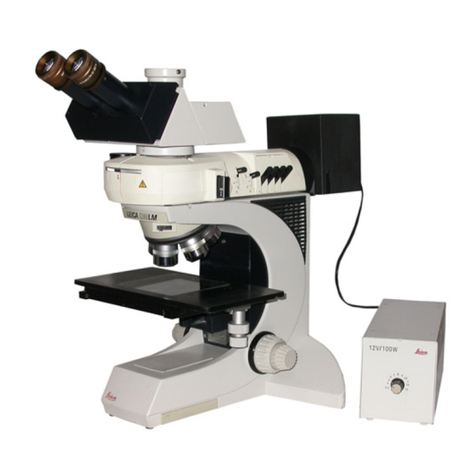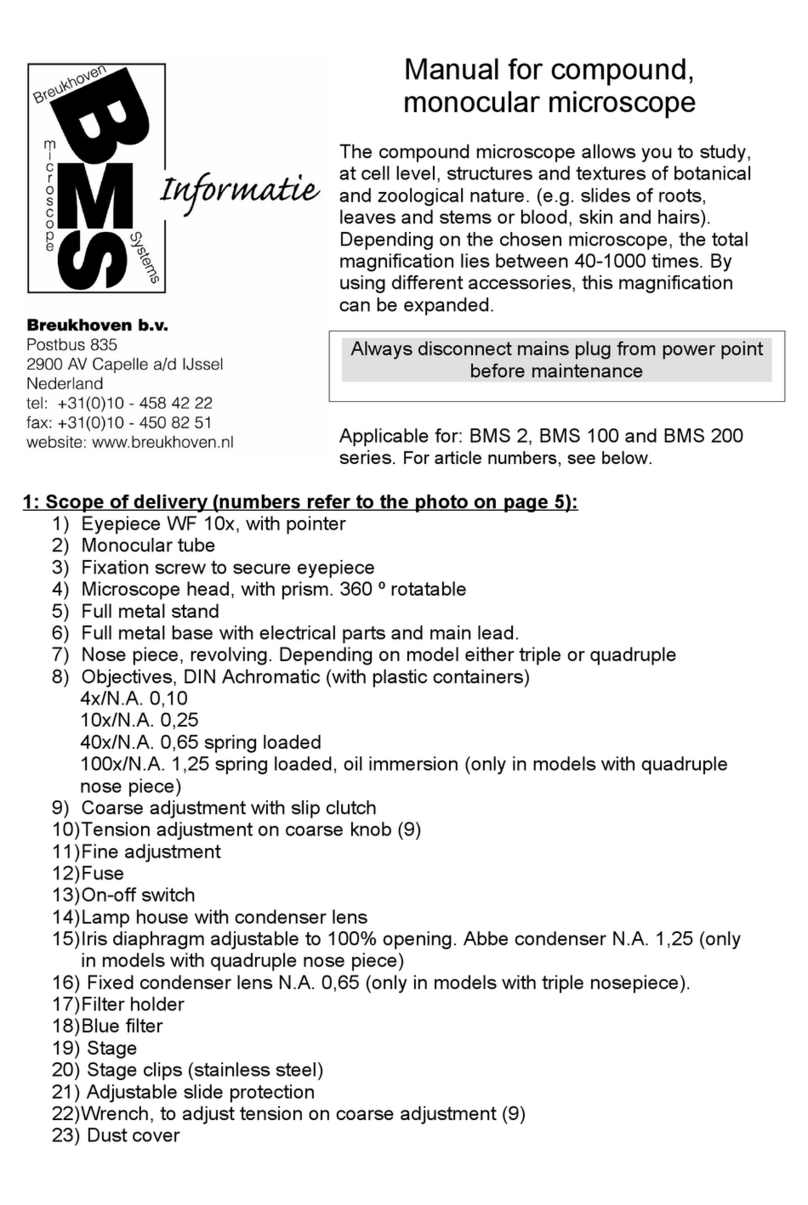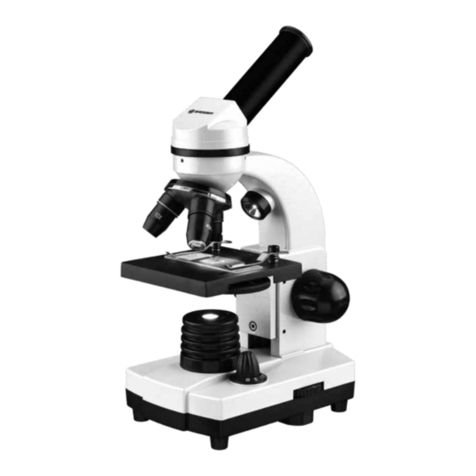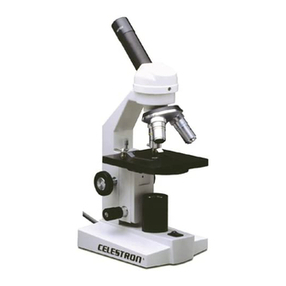Flinn MS1171 User manual

1
Flinn Compact Microscope
Owner’s Manual
Please read and adhere to all recommendations in this manual to ensure the best experience and to maintain your microscope in
good working order.
The Flinn Compact Microscope (MS1171) has the features of a full-sized microscope in a convenient and compact size.
Unpacking, Assembly and Storage
1. The Flinn Compact Microscope has been carefully packed to assure it reaches you in the best possible condition. Retain
the styrofoam container in case you need to transport, store, or return the microscope for service. If it becomes neces-
sary to ship the microscope for any reason, pack it in the styrofoam container and in another box, secured for transport.
Inadequate shipping may result in damage to your microscope.
2. Lay the molded microscope container in the UP position. Remove the top piece and inspect the contents and container.
Each microscope comes with the following:
a. The pre-assembled microscope.
b. Power supply.
c. Two eye pieces—10X and 25X
d. Dust cover.
e. Accessory LED light
3. Connect the included power supply and install the three AA batteries. Many similar looking power supplies have different
voltages. Before each use, examine the power supply to ensure the voltage is correct. Flinn Compact Microscopes all have
an output voltage rating of 5V. This microscope uses either the power supply or the batteries. The power supply does not
charge rechargeable batteries.
4. Always handle and move microscope carefully by securely holding the arm and base of the microscope. Avoid impact or
abrupt movements during transport.
5. Store microscopes in a dry, clean place away from direct sunlight and protected from dust and dirt. A microscope stor-
age cabinet such as Flinn’s Mobile Microscope Storage Cabinet (Catalog No. FB1031) or Microscope Storage Cabinets
(Catalog No. AP7133 and AP7142) will protect microscopes from dust and damage from UV rays.
Description of Components (Refer to diagram on the following page.)
1. Eyepiece (ocular lens): Lens closest to the eye, magnifies the primary image formed by the objective lens. This model
comes equipped with a widefield 10X eyepiece and a widefield 25X eyepiece.
2. Revolving nosepiece: Round, rotating piece that holds objective lenses. Rotating the nosepiece changes the magnification
by moving different powered objective lenses into the optical path.
3. Objective lens: Lenses that magnify the object from low to high magnification. The Flinn Compact Microscope comes
with three DIN objective lenses: 4X, 10X, and 40X magnification, respectively.
4. Stage clips: Metal spring-mounted clips that hold the specimen slide in place.
5. Stage: Platform of the microscope where the specimen slide is placed.
6. Disk diaphragm: A plastic disk below the stage with various sized openings to adjust the amount of light on the specimen
from below.
7. Safety rack stop: When properly adjusted, controls maximum upward travel of stage. This stop has been pre-adjusted at
the factory.
8. Coaxial focusing knobs: Integrated course and fine focus knobs moves the stage up and down to get the specimen in
clear focus.
9. Illumination: Built-in adjustable LED lighting above and below the stage with a positionable LED accessory light.
© 2016 Flinn Scientific, Inc. All Rights Reserved. Publication No. 1171
MS1171 / 032916

Flinn Basic Microscope Manual continued
2
Operation
1. Place microscope in front of you with the eyepiece in a comfortable position.
2. Secure the specimen slide using the stage clips.
3. Turn on the LED by turning the rheostat dial. Adjust the intensity. The microscope may be used with or without a power
supply if batteries are installed.
4. Rotate the focus knobs to move the stage to its lowest position.
5. Position the 4X objective lens in the optical path by rotating the nosepiece until it “clicks” in place. Note: Each time you
change from one objective lens to another, turn the nosepiece until you hear the “click” indicating that the lens is properly
indexed in the optical path.
6. Turn the disk diaphragm until the desired amount of light illuminates the sample. Less light is required for lower magnifi-
cation and more light is required for higher magnification.
7. Look through the eyepiece and turn the coarse focusing knobs until specimen comes into focus. Scan the slide to located
desired specimen for magnification. Make adjustments to the focus using the fine focus knob.
8. Ensure that the specimen is in the center of the viewing area before increasing the magnification. When the specimen is
centered and focused under low magnification, it will be in view under higher magnification. Increase the magnification to
view the specimen with more detail.
© 2016 Flinn Scientific, Inc. All Rights Reserved.
Revolving
Nosepiece
DIN Objective
Lens
Eyepiece
LED
Illumination
Disc
Diaphragm
Stage
Clips
Coaxial Course and Fine
Focusing Knobs
Safety
Rack Stop
Rheostat for LED
Lighting
Stage
12.5 cm (5 in)
19 cm (7.5 in)
28 cm (11.5 in)

Flinn Basic Microscope Manual continued
3
Objective Specifications
Objective Numerical
Aperature (NA)
Color-Coded
Ring
Total Magnification
with WF10X eyepiece
Total Magnification
with WF25X eyepiece
4X 0.10 Red 40X 100X
10X 0.25 Yellow 100X 250X
40X 0.65 Light Blue 400X 1000X
9. Each objective has a colored ring indicating the magnification. The color of the objective can be used to indicate which
objective should be used to view the specimen.
10. The NA value is the resolving power of the objective lens. Magnification and resolving power result in an image that is
both large and clear. The NA value multiplied by the total magnification gives the maximum resolving power.
11. Do not let the 40X objective lens come into contact with a wet slide surface, as prolonged contact with any moisture could
damage the lens. If lens is exposed to moisture, promptly wipe with soft tissue to remove moisture.
Maintenance
WARNING: For your own safety, remove the batteries and unplug the microscope before performing maintenance.
1. Optical maintenance
Note: Do not attempt to disassemble any lens components. Consult a microscope service technician when any repairs not
covered by instructions are needed.
a. Fingerprints or other matter on the front lens element of the objective lens is the single most common reason that you
will have difficulty in focusing the microscope. Before having costly servicing done, make certain to examine the front
lens element with a magnifying glass.
b. Prior to cleaning any lens surface, brush dust or dirt off lens surfaces using a camel hair brush or compressed air.
c. Clean only the outer lens surface. Breathe on lens to dampen surface, then wipe with lens paper or lint free tissue. You
may also use a cotton swab moistened with distilled water. Wipe lenses with a circular motion, applying as little pressure
as possible. Avoid wiping a dry lens surface as lenses are scratched easily. If excessive dirt or grease gets on lens surfaces,
a small amount of lens cleaner can be used on a cotton swab or lens tissue.
2. Mechanical maintenance
a. The rack stop screw has been pre-adjusted at the factory and should not require re-adjustment. However, if you do
attempt re-adjustment, note the following procedure:
• Loosen the rack stop screw by rotating in a counterclockwise direction.
• With fine focus adjustment at mid-range, focus on a standard slide until sharp image is obtained.
• Rotate rack stop screw in clockwise direction until tight.
b. To clean metal and plastic parts, use a clean, damp cloth to remove dust or dirt, followed by a dry cloth.
© 2016 Flinn Scientific, Inc. All Rights Reserved.

Flinn Basic Microscope Manual continued
4
Troubleshooting
Symptom Cause Solution
The side of the field of view
is dark or not even.
The nosepiece is not in the right position. Turn the nosepiece into the right position.
Lenses are dirty. Clean the lens.
Stain or dust is observed in
the field of view.
Stains have accumulated on the specimen slide. Clean the specimen.
Stains have accumulated on the lens. Clean the lens.
Unclear image.
No cover slip on the specimen slide. Add the cover slip.
The cover slip is not standard thickness. Use a cover slip with 0.17mm thickness.
The specimen is facedown. Turn it over.
The specimen slide is not fixed. Fix with clips.
The image moves while
focusing.
The aperture is not large enough. Rotate the disk diaphragm to allow more
light in.
The specimen is outside the cover slip. Reset the cover slip.
The field of view is not
bright enough.
Stain or dust has accumulated on the con-
denser, objective, eyepieces, base lens. Clean lens.
The objective touches the
cover slip while turn the
nosepiece.
The cover slip is facedown. Turn the cover slip over.
The cover slip is not standard. Use a cover slip with thickness of 0.17mm.
The light does not work.
No power to the light.
Check the connection of the power cable or
replace the batteries. Check the rating on the
power supply.
The bulb is not inserted correctly. Reinsert the bulb.
The bulb burned out. Replace it.
The bulb burned out too
soon.
The voltage is too high. Use a 4.6 V power supply.
Use of the wrong bulb. Replace with a correct one.
Limited 5-year warranty
Flinn Scientific warrants the microscope against manufacturers defect for five years from the date of purchase. Please contact
© 2016 Flinn Scientific, Inc. All Rights Reserved.
Table of contents

